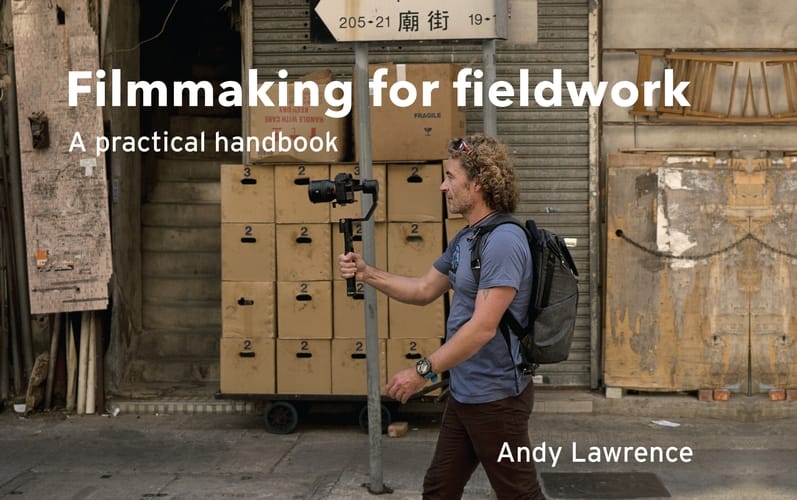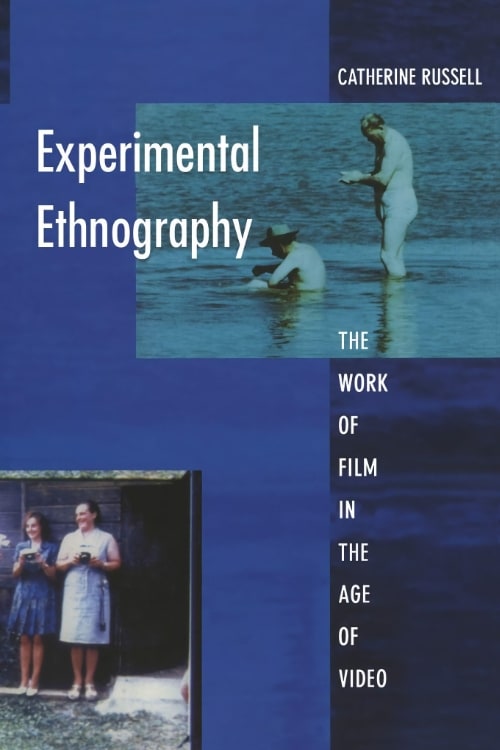Cinematic Research Practices Complete by 20 October
Watch these lectures
Tutorial
- Editing In The Camera
Metje Postma - Doing Visual Ethnography
Metje Postma
Read these texts
Write journal entries to these prompts
In addition to your entries/reflections on tutorial exercises, field studies, and method reflections, respond to the following module specific prompts.
- When taking up the video-camera, what are the technical insecurities you encounter. How could you solve those?
- What shooting-style do you think would best suit your project?
- What kind of relationship would you want to establish with the persons you film through the camera (observational, participatory, intimate, exploring cognitive worlds, sensorial etc), and how do you think you can achieve that?
Cinematic Research Practices Complete by 26 October
Read these texts
Complete Sections 1-3 (120pp) before the MiP week (26 October)
Prepare your equipment
Get to know your camera kit. While reviewing the online materials on camera settings, adjust your camera accordingly.
Sony PWX -DR70 settings: This video tutorial explains the main settings of the university’s camera.
- Sony PWX-70 Menu settings This document summarizes the camera’s main menu controls.
- Sony PWX-70 Explanation This slide presentation provides a step-by-step overview of the university’s camera.
- Sony PWX-70 Manual ➙ Refer to the manufacturers manual for further details about the university camera.
White balance card: This video explains why you may want to use custom white balance (and in particular, why white balance problems can NOT be solved in post for video, unlike still photography). The first 3 minutes (approx) of this video explains why you might want to do custom white balance, and the next minute shows how to do this on a DSLR.
Setting white balance on the Sony PXW-X70C: This video shows the controls you need to use to make a custom WB setting.
Cleaning kit: This first five minutes of this video demonstrates succinctly and clearly the use of a cleaning kit demonstrated on a DSLR, but is applicable to other cameras. Beyond 5m it covers cleaning your DSLR sensor, which is not advisable or applicable for our video cameras.
Cinematic Research Practices Complete by 3 November
Watch these lectures
Seminar
- Voice (not available)
Metje Postma - Frames, Shots, Sequences
Metje Postma
Read these texts
Watch these videos
Schoolscapes
David MacDougall
password: macdougall
2007, 77 min
Tourou et Bitti, les tambours d’avant
Jean Rouch
password: rouch
1971, 11 min
Koriam’s Law (NAFA Collection)
Gary Kildea & Andrea Simon
Login @ The NAFA website
User: NAFA for Leiden
Password: Leiden2020
2009, 1 hour and 50 minutes
The Age of Reason (Alexanderstreet)
David MacDougall
2004
Voices in the Desert – the Rashaida and Fuzum
Metje Postma
Password:Voices
2005
Write journal entries to these prompts
In addition to your entries/reflections on tutorial exercises, field studies, and method reflections, respond to the following module specific prompts.
- How would you characterize the relationship between Peter Avarea (the protagonist), the anthropologist, and the film team in Koriam’s Lawfrom the perspective of how the content of the film has been negotiated?
- With regard to how the filmmaker/anthropologist ‘speaks for’, ‘speaks with’, or ‘speaks nearby’ the subjects in the process of filmmaking and in the final product, reflect on how you think the authority to represent (the voice of ‘the other’) has been negotiated in the assigned films?
- Reflect on how you intend to “give voice” to your ‘subjects’ in your film and whether and in what way you intend to include your own voice.
Cinematic Research Practices Complete by 17 November
Watch these lectures
Tutorial
- [popup_anything id=”3004″]
Rosanne van den Berg - [popup_anything id=”2983″]
Rosanne van den Berg - The Ambivalence of The Image
Peter Snowdon
Read these texts
Watch these videos
Carrière de Pissy (12 mins – Eliott Chabanis, 2018)
pw: CNS2018
Scenes from a Transient Home (13 mins – Roger Horn, 2019)
pw: LUVE_2020
Golden Snail Opera (46 mins – Yen-Ling Tsai, Isabelle Carbonell, Joelle Chevrier, Anna Lowenhaupt Tsing, 2016/9).
- The film: (Please watch the first 19 minutes)
- The performance: (5 mins)
- The interview ‘Where the Image Takes Us’:
Write journal entries to these prompts
In addition to your entries/reflections on tutorial exercises, field studies, and method reflections, respond to the following module specific prompts.
- What have you learned the last month about video that will be important to address in your method and ethics section of your proposal?
- How will you put this film training into a multimodal framework?
- What technical skills do you still need to improve?
- Write out 2-3 specific ideas for how you will strengthen these.
Cinematic Research Practices Complete by 9 November
Read these texts
Review the Visualizing Spatial Experience workbook Link ➙
Prepare these materials
Note the materials you need to prepare on page 5. Supplemental readings will be provided to you.
Download this app
You will be invited to collaborate on Microsoft Teams beforehand. Please download in advance.
Workshop schedule is also available here


